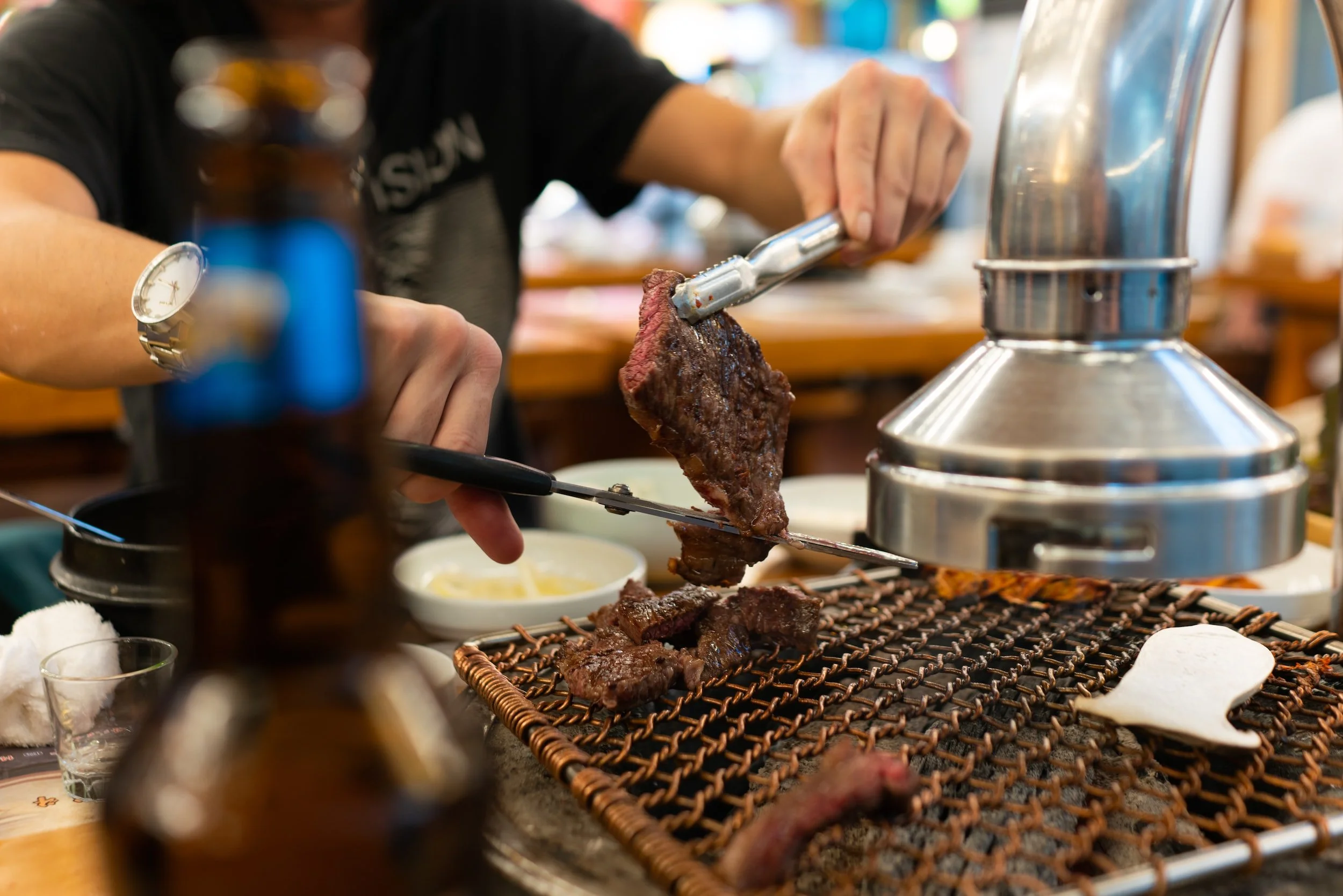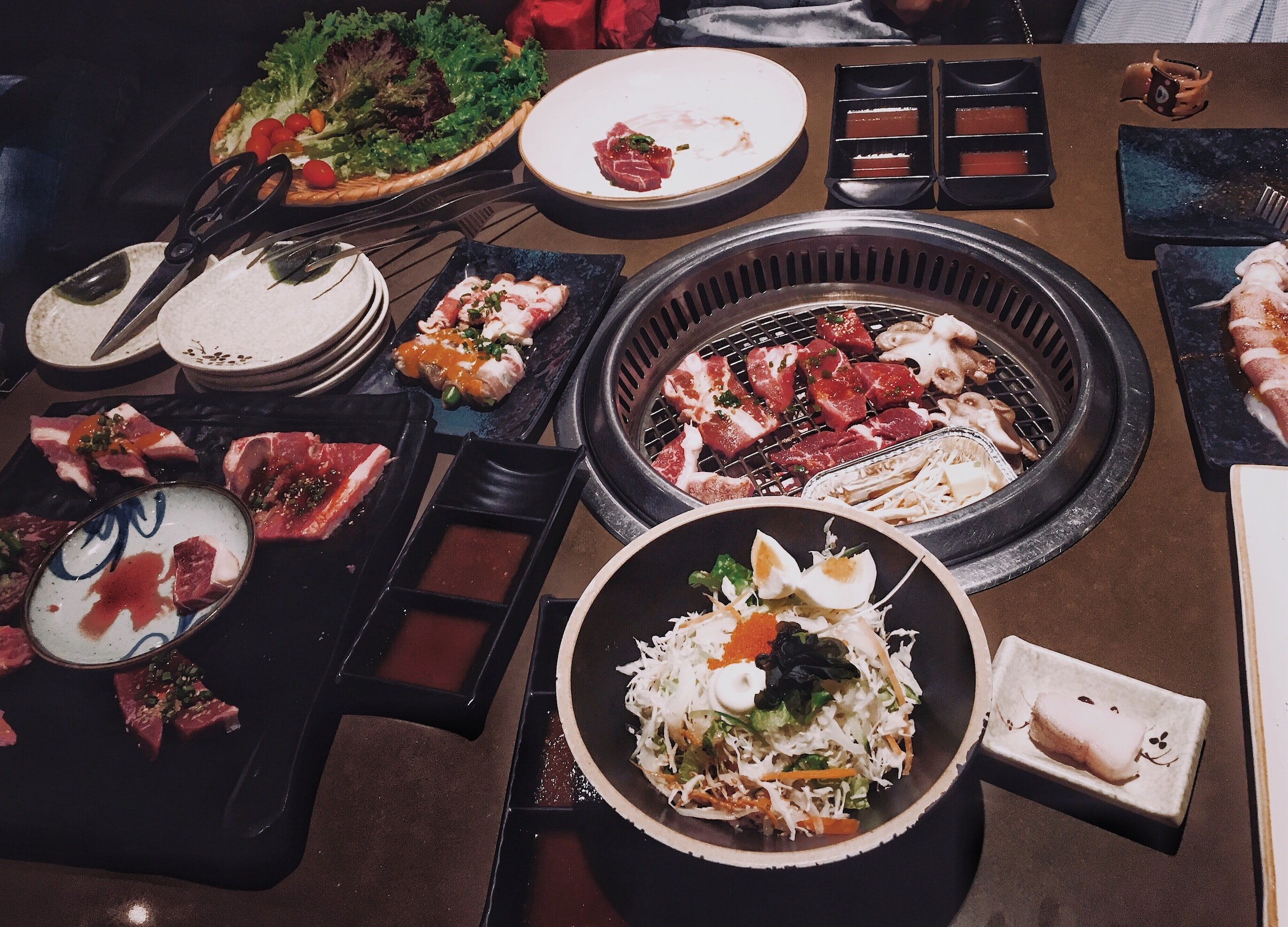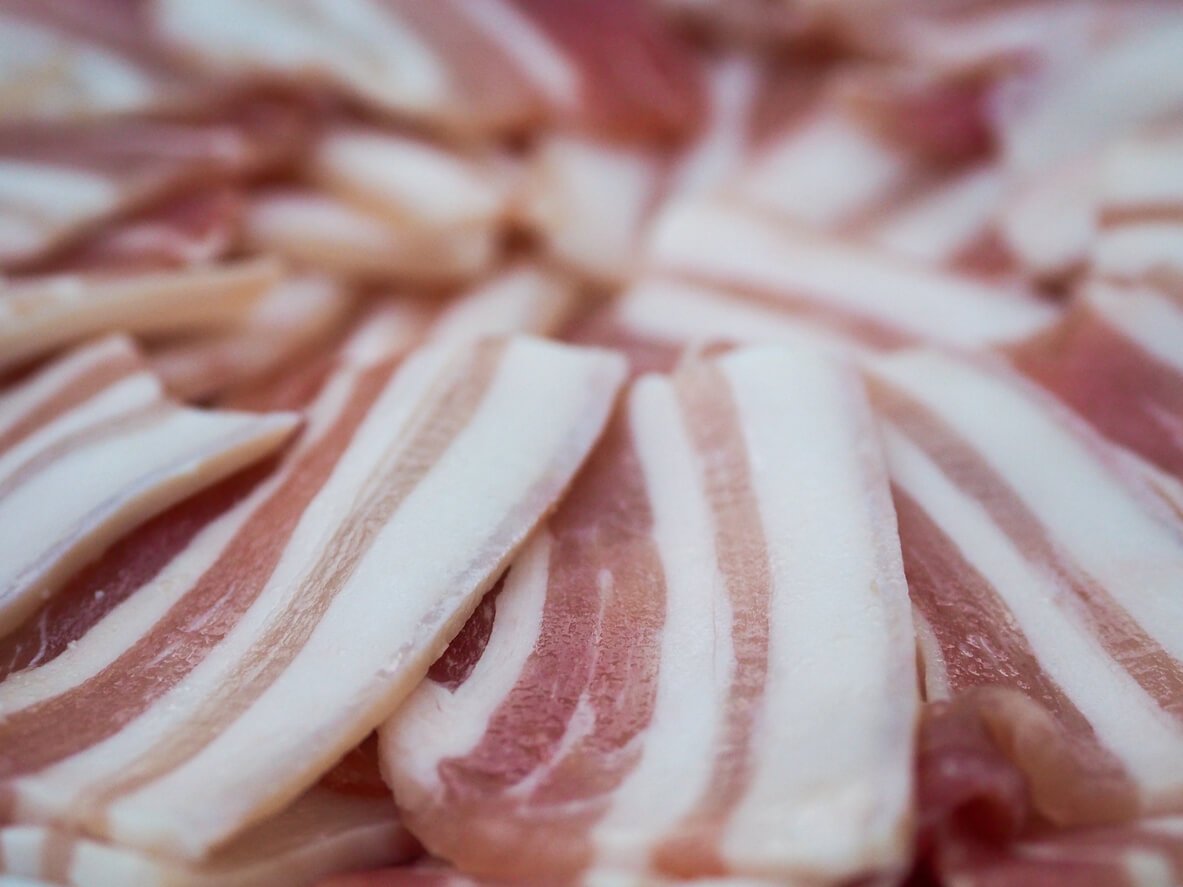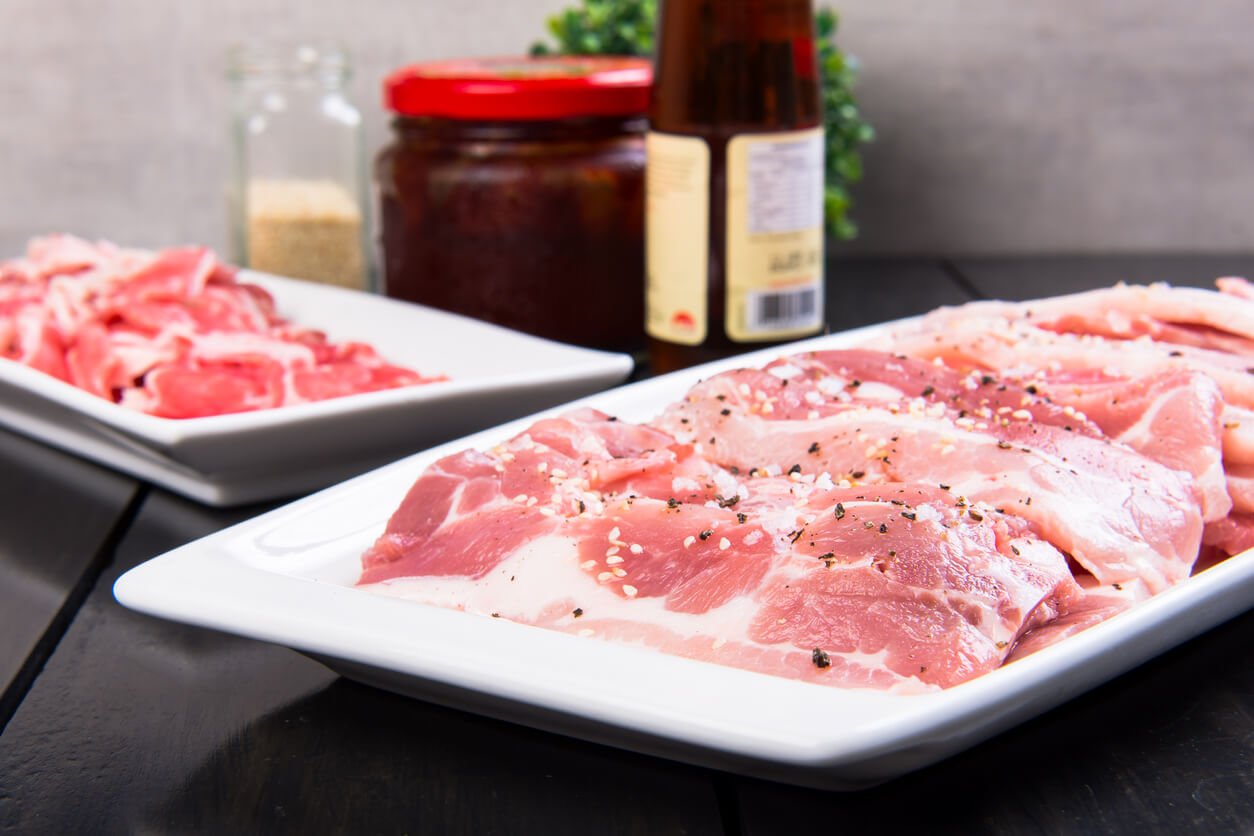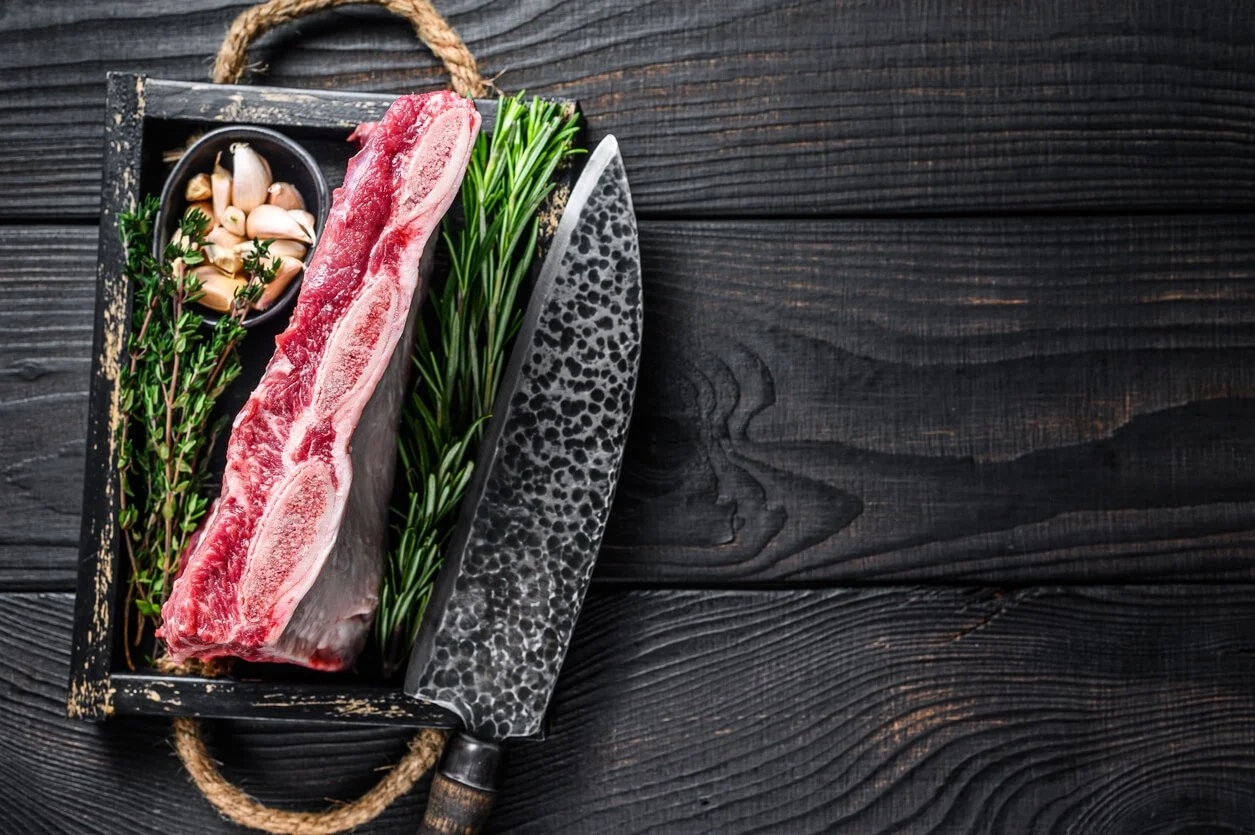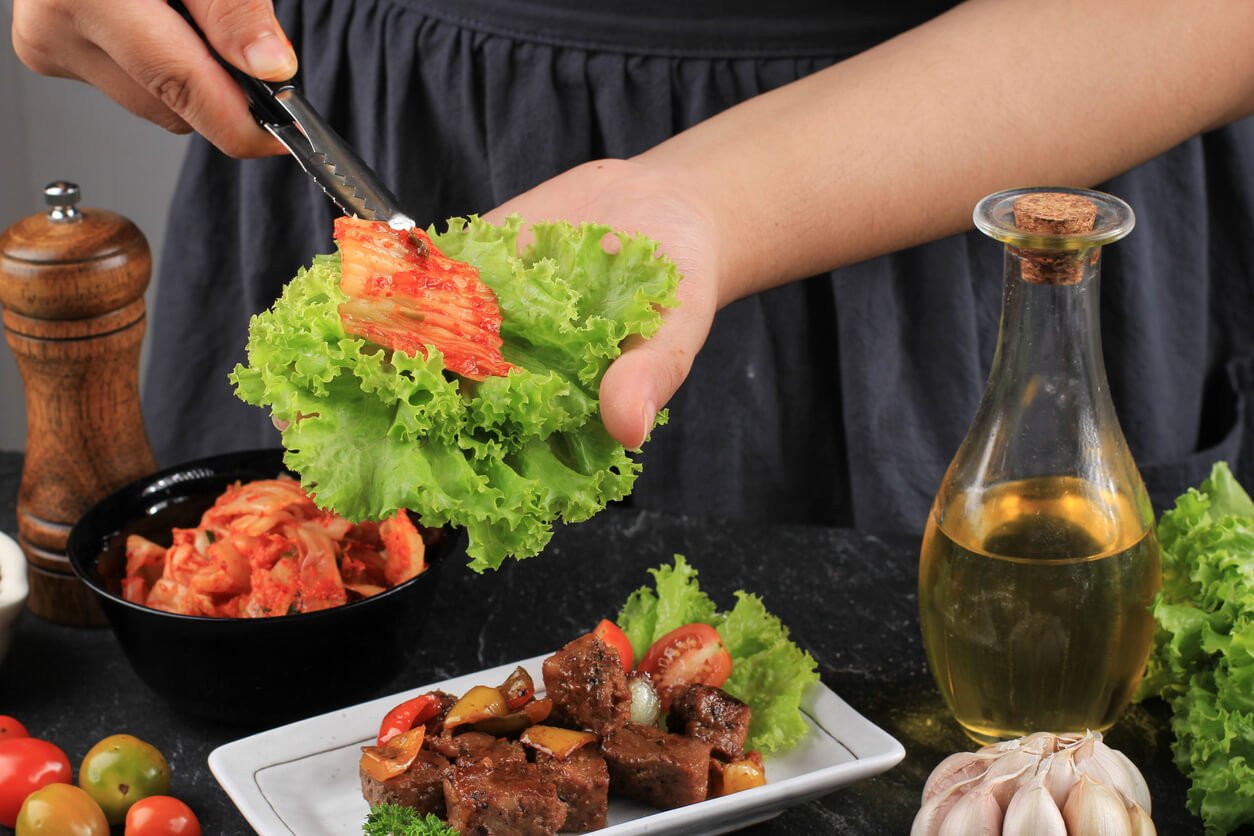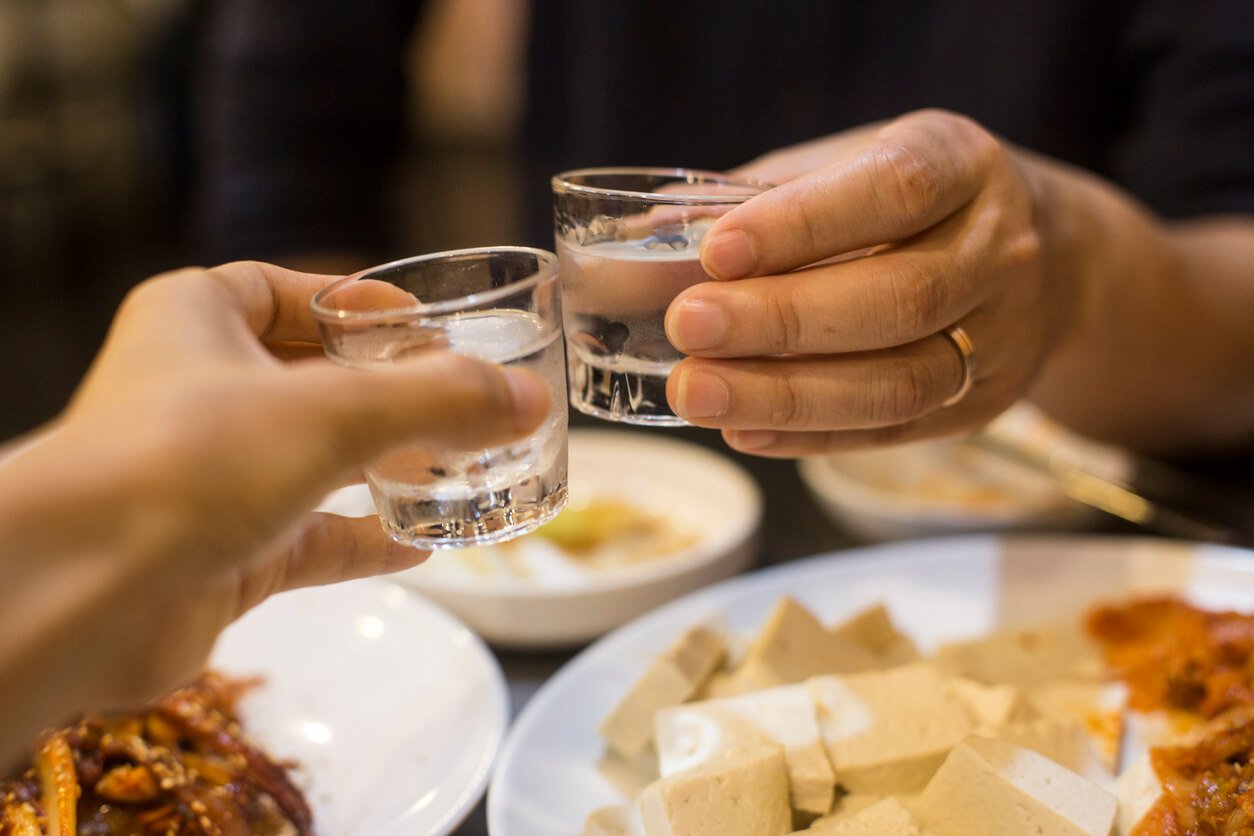How To Make Korean BBQ at Home: The Ultimate KBBQ Guide
Discover > Texas Home Cooking > How To Make Korean BBQ at Home: The Ultimate KBBQ Guide
Why go to Korean barbecue (What wine goes well with barbecue?) restaurants in Texas when you can just make your own mouthwatering KBBQ at home? All you need for amazing Korean Barbeque and the sauce is the right know-how, equipment, and of course, the meat!
Introduction to Korean Barbecue / KBBQ
Barbecue is one of those quintessential summer food that can be made in so many different ways. You can go with the traditional American barbecue, or mix it up with some Spanish tapas-style skewers. But have you ever tried Korean barbecue or KBBQ? It’s a delicious and unique way to prepare barbecue, and it’s surprisingly easy to make at home.
Korean BBQ is a cuisine of contrast and balance. It’s completely customizable so that everyone at the table can eat what they want, without feeling left out or overwhelmed with choice overloads! The end result is always delicious, and it’s no surprise that this dish is so popular in the Lone Star State.
If you’ve never had Korean barbecue before, it’s simply the traditional Korean way of grilling meat tableside. Some meats are presented unseasoned, which works great with the dipping sauces. The most common sauce is a gochujang-based sauce, which is made with red pepper paste, garlic, sugar, and rice (how long does rice last?) wine vinegar. This combination gives the meat a sweet, savory, and slightly spicy flavor that is absolutely delicious.
The whole meal is indeed a great experience. From searing the protein to perfection, finding fun in pairing meat with dipping sauces, and wrapping ssam! When trying out Korean BBQ for the first time, expect bold flavors, and expect to eat alot!
In this ultimate guide, you’ll learn all the delicious details there is to know about Korean BBQ!
Types of Korean BBQ at Home Equipments
One of the great things about Korean BBQ is that you don’t need a lot of special equipment to make it. All you need is the right kind of grill, cooking tongs, kitchen scissors, small dishes, and some good quality meat
Korean BBQ Grill
The Korean BBQ experience is all about the grill. The grill specifically made for Korean BBQ is different from its American counterpart. Instead of having a heavy-duty griller to do the work, Korean BBQ grills are typically tabletop style. It sits in the middle of your table, rather than off to one side so you can watch and be part of every step as it cooks right before your eyes!
A Korean BBQ grill is specifically designed to let the fat safely run off without flaring up, allowing you to cook indoors. They are designed to not let any thinly sliced or tiny pieces of meat fall through.
If you’re worried about not having a restaurant-style table grill for your Korean BBQ at home, then you shouldn’t be. A stand-alone tabletop grill should be more than enough.
There are several different types of Korean grills in the market. These are the three Korean barbecue grill types that people use :
Electric Korean BBQ Grill
Electric Korean BBQ grills are popular because they are the easiest to use. Electric grills provide a lot more control to adjust the heat settings based on how your meal is progressing. These grills give a moderate heat level, meaning they don’t get as hot as the other types. Electric grills are smokeless, which means they can be used indoors, perfect for your Korean BBQ at home.
Pros of Electric Korean BBQ Grills:
-Easy to use
-Can be used indoors
-Gives a moderate heat level
Cons of Electric Korean BBQ Grills:
-Must be placed on a heat-resistant surface
-Not as hot as other types of grills
Stove Top Korean BBQ Grill Pans
The stove top grill pans can work at higher temperatures and give you a better sear. They are less common because they can be difficult to control the temperature on.
The grill pan is placed on top of your stove, with the burner set to high. Once the pan is heated, you add oil and then place your food in it.
You’ll need to keep a close eye on the grill pan to make sure the food doesn’t stick and that it doesn’t burn.
Pros of Stove Top Korean BBQ Grill Pans:
-Can reach higher temperatures
-Gives a better sear
Cons of Stove Top Korean BBQ Grill Pans:
-Difficult to control the temperature
-Can easily stick or burn
Charcoal Korean BBQ Grill
The charcoal BBQ grill is the most traditional way to cook Korean barbecue. It’s also the grill that will give you the best flavor. There’s nothing like the flavor of charred meat cooked on a charcoal grill.
Traditional Korean wood charcoal is made of sections from oak trees that have all the water and vaporous elements removed through heat. As a result, it burns very purely with clean-burning properties perfect for BBQ grills!
Pros:
-Gives the best flavor
-Can reach high temperatures
Cons:
-Takes longer to set up
-Can be difficult to control the temperature
-Not recommended indoors
Korean BBQ Cooking Tongs
You’ll need a pair of long cooking tongs to flip the meat as it cooks. Look for a pair that is heat-resistant and has a good grip. You don’t want them to be too flimsy, or they will bend when you try to pick up the meat. If you’re feeling adventurous, you can opt to go with large cooking chopsticks.
Kitchen Scissors
Korean barbecue is often served with a variety of sides, including kimchi (how long does kimchi last?), rice, and salad. You’ll need a pair of sharp kitchen scissors to cut the meat into smaller pieces so that everyone can enjoy it.
Small Dish Plates
Lastly, you’ll be needing tiny dishes for your banchan(side dishes), small dipping dishes for sauces, and plates or small bowls for eating!
Now that you have all the necessary equipment, it’s time to choose the perfect cuts of meat for your Korean BBQ feast!
Stars of Korean BBQ: The Meats
Pork is the most common type of meat used in Korean barbecue, but you can also use beef (how long does beef last?) and chicken! The important thing is to choose good quality meat that is well-marbled. This means that there is a higher fat content, which helps to keep the meat moist and flavorful as it cooks.
Sure it’s not uncommon to find seafood at a Korean BBQ – but meat is really the star of the show. You can have them unseasoned or marinated which definitely adds to the multitude of flavors you can expect on your plate.
Most Popular KBBQ Choice: Pork
Pork is the popular choice for Korean barbecue. The most common cut of pork used is pork belly (What wine goes well with pork belly?), which is a fatty cut of meat that is perfect for grilling. In grilling meat, it’s important to choose a cut of pork that has some fat content, as this will help to keep the meat moist as it cooks.
Samgyeopsal
Samgyeopsal is a South Korean delicacy made with non-marinated pork belly. The name of the dish is composed of three words: sam (three), gyeop(layered), and sal (meat), so it can be directly translated as three-layered meat, referring to the three layers of lean meat and fat that appear in the pork belly when cut.
Samgyeopsal is said to be more succulent than bacon without being too salty, but if you prefer the saltiness and flavor, you can dip it in sesame oil (how long does sesame oil last?), salt, and pepper sauce. Although enjoying samgyeopsal is all about balancing out the grease – wrap in lettuce with some ssamjang sauce, a piece of garlic, and some scallion salad, and you’re good to go!
Dwaeji Bulgogi
Dwaeji Bulgogi or “pork fire meat” is pork that’s tossed in a gochujang-spiked marinade. When it comes to Korean cuisine, there’s no denying that pork has a special place in their hearts. The funky and intense flavors make for an amazing pairing with stronger ingredients like kimchi or soy sauce (how long does soy sauce last?).
You’ve probably had some grilled pork belly in your life, but did you know that it can be difficult to cook well? The super-thin pieces are prone to sticking and hard for the grill marks.
To avoid these problems go with cuts like Boston butt which has plenty of fat. You may also choose cuts that are at 1/2 inch thick so they don’t burn before being cooked all way through!
KBBQ Meat Runner Up: Beef
Korean barbecue is all about the richness of smoke-infused meats and fat. The other elements at your table should play significant roles, but they’re secondary to this dish’s waves coming off a grill with beautiful charring on it that make for some tasty bites!
Kalbi or Galbi
The prime candidate for Korean barbecue is beef short rib, also known as kalbi. It’s a cut of meat that is well-marbled and has a good amount of fat. This fat helps to keep the meat moist as it cooks, and it also gives it a rich flavor.
The Korean-style short rib is a strip of beef cut lengthwise from the chuck end. Unlike American and European-style ribs which include thick slices on bone in, these are thin cuts that can be cooked any way you want!
For the best flavor, look for Korean-style beef that has been marinated in a gochujang-based sauce. This will give the meat a wonderfully complex flavor that is absolutely delicious.
Bulgogi
Literally meaning “fire” and “meat”, bulgogi is a thinly shaved beef. It is often prepared using the most tender parts of beef, pork, or chicken. However, in general terms, unless specified, bulgogi is made with beef. Bulgogi is a classic Korean BBQ dish preparation in which the meat is marinated in a sweet and savory sauce and grilled on a barbecue that has been around for nearly over a thousand years.
Bulgogi sauce has a blend of soy sauce, brown sugar, Asian pear, garlic, ginger, ground black pepper, toasted sesame oil, and of course some gochujang to taste. This gives the dish a slightly spicy, salty, mildly sweet, and nutty savory flavor profile.
Prime Rib
Korean BBQ is always associated with cuts that are marinated like the kalbi and the bulgogi. Did you know that the non-marinated varieties are also a top choice? A perfectly grilled unmarinated prime rib works perfectly when topped with scallion salad and some doenjang (soy bean paste) for a salty, savory dressing!
Other cuts of beef that are suitable for korean barbecue include sirloin, brisket, and ribeye.
The “Healthier” KBBQ Meat Choice: Chicken
If you’re looking for a leaner option, chicken is a good choice for Korean barbecue. The most common cut of chicken used is boneless, skinless chicken breast. However, you can also use chicken thighs (What wine goes well with chicken thighs?) or drumsticks. Just make sure to remove the skin before grilling, as it will cause the chicken to dry out.
Dak Bulgogi
Chicken isn’t the first choice of meat presented at Korean barbecues. However, if you do want to grill on the table, it’s usually chicken thighs marinated in bulgogi sauce. The sauce used is the same as beef and pork, also mixed with gochujang to give it that characteristic spiciness.
If you’re wondering where to get top-quality meats in Texas, we’ve got you covered! Check out our directory of the best butchers here.
The Ultimate Korean Barbecue Dipping Sauces
A Korean BBQ is not complete without dipping sauces. They are there to enhance the flavors of the meat and to add some extra zing. The great thing about these dipping sauces is that there are no specific rules, you can do as you please!
Ssamjang
Ssamjang is best known as a dipping sauce for Korean BBQ wraps. Ssam means wraps or wrapped food and jang is a collective term for Korean condiments. Ssamjang sauce is a thick, spicy paste typically spread on the leaves and lettuces before wrapping them around a tasty Korean bbq meat and vegetables.
There are many different types of ssamjang. They are typically made with doenjang, which is a soybean paste and/or gochujang, a hot pepper paste, as well as some other ingredients. The taste is savory, salty, sweet, and slightly spicy. The pungent taste acts as a palate cleanser, and is best paired with the rich fatty meat without overpowering the whole bite. Over all, it’s really a must-try and is the secondmost important part of the Korean BBQ next to the meats!
Gochujang
As mentioned earlier, gochujang is a hot pepper paste that is used in many Korean dishes. This basic sauce goes well with everything. It is made with chili peppers, glutinous rice, fermented soybeans, (how long do soybeans last?) and salt. The taste is spicy, sweet, and savory.
So if you’re looking for that spicy zing, this dip is the one for you. You can find gochujang at most Asian markets or online.
If you enjoy spicy food, give our hot pepper fermentation guide a try for your own homemade hot sauce (how long does hot sauce last?)!
Sesame Oil, Salt, and Pepper
This sauce is the most beginner-friendly out of all the sauces. Have you tried this dipping sauce on a non-marinated pork belly or beef? The nutty saltiness of this very basic dipping sauce adds way more flavor on top of grilled meat. Just top your meat with a slice of raw garlic, and you’re all set!
If you’re making some at home, toasted sesame oil, salt, and ground black pepper are all you need. It’s that easy! The key is to use freshly ground black pepper for the best flavor.
Cho Ganjang
Cho ganjang is an essential dipping sauce in Korean cuisine. Cho means vinegar, while ganjang means soy sauce. It’s a slightly sweet, tangy, and savory sauce composed of soy sauce, rice vinegar (how long does rice vinegar last?), water, garlic, onion, and some gochugaru or chili pepper powder. It’s often paired with some wasabi or ginger to add a more savory flavor.
How to Make Ssam
In Korean BBQ, ssam is the term used for the meat and veggies after you wrap them in leaves. The meat is usually grilled, but you can also use raw or marinated meats.
The most common type of ssam is made with lettuce leaves, but you can really use any type of leafy green. The other ingredients typically used are rice, kimchi, and ssamjang sauce.
To make a ssam, start with a lettuce leaf and add a small amount of rice. Then, top it with your favorite Korean BBQ meat and kimchi. Finally, add some ssamjang sauce on top.
Complete your Korean BBQ spread with these wraps!
Lettuce Leaves
Choose leafy varieties of lettuce that can be sturdy enough to hold ingredients. They should also be flexible enough to wrap around your meat without breaking. Always remember to shock your leaves in ice-cold water right before serving so that they don’t limp. Proper storage is also important so you don’t end up with mushy leaves.
Perilla Leaves
In Korean cooking, perilla leaves aren’t just used to make a ssam. They are also typically used in a pickled side dish, in stir fry, and in soup! Perilla is part of the mint family which gives it a strong aroma. It is similar to Japanese Shiso but is known to have different flavors and shapes.
Perilla leaves are used in Korean BBQ to wrap up with the barbecued meat, either alone, or with a lettuce leaf. With a bit of rice, a dab of ssamjang, and some kimchi, this will make for a delicious wrap!
Banchan or Side Dishes
Banchan literally means side dishes. These are the small plates that are served ahead of the main course. Banchan aren’t just appetizers; their role is to complement, contrast, and act as condiments all at once.
There are endless possibilities when it comes to banchan. Some of the most common ones are kimchi, potato salad, fish cake, stir-fried vegetables, and radish kimchi.
But don’t be afraid to get creative! You can really make any dish into a banchan. The key is to make sure that they are bite-sized, and can be eaten with rice.
Kimchi (salted and fermented vegetables)
Kimchi is one of the most popular banchan. It’s a traditional side dish made from salted and fermented vegetables that’s both spicy and tangy. Kimchis come from chili powder, garlic, ginger, red pepper, sugar, and fish sauce. (how long does fish sauce last?)
Oh and you can grill kimchi with your meats! Just be careful not to burn the kimchi, or they will turn bitter.
Seasoned Soybean Sprouts (Kongnamul Muchim)
Seasoned soybean sprouts is one of the most commonly served side dishes at a Korean BBQ. The fresh, crunchy texture of soybean sprouts is an excellent addition to your banchan spread. They’re usually drizzled with sesame oil and tossed with scallions that give them just enough bite while still being tender in your mouth. It’s a perfect balance between flavors like garlic and grilled meat marred by spices from the sauce.
Seasoned Spinach (Sigeumchi Namul)
The sigeumchi namul is a simple Korean dish made with spinach. Namul is a term that refers to a seasoned vegetable dish, while sigeumchi means spinach in Korean.
Spinach is one of the most common vegetables used as a side dish in Korea. You can simply season the blanched and drained spinach with salt, add some minced garlic, and top with sesame oil and toasted sesame seeds (how long do sesame seeds last?)! If you want a more spicy approach, you can mix your blanched spinach with some gochujang to give it flavor and that zing!
Oi Bokkeum (Stir-fried Cucumbers)
Stir-fried cucumbers (how long do cucumbers last?) is very popular in Korean cooking. Oi means cucumber in Korean, while bokkeum means stir-fried. This method of cooking brings out the sweetness of the cucumbers, a perfect addition to your Korean barbecue spread!
The secret to crunchy cucumbers is to lightly salt the cucumbers first to draw out the water. Then very tightly squeeze out the water content before stir-frying. Make sure you don’t overcook the cucumbers to maintain the nice green color and crunchy texture!
Braised Potatoes (Gamja Jorim)
Gamja Jorim is a braised potato dish also traditionally served as banchan. The potatoes are braised in a slightly sweet, soy sauce-based sauce.
Any kind of potato variety will work for this dish, my favorite ones to use are marble potatoes. They are small in size so they cook evenly and tend to absorb the flavors of the sauce well.
For a more flavorful dish, you can also add some kimchi juice or gochujang to the sauce!
Whether you’re looking to impress with a great banchan spread for a Korean BBQ, or just craving for a healthy Korean side dish, these banchan dishes will complement just about any korean meal.
Drinks that go well with Korean BBQ
The drinking culture in Korea is quite a big thing. So when eating Korean BBQ, it’s not uncommon to have alcohol expected with the meal. These are the three alcoholic beverages often paired with a Korean BBQ :
Soju
Soju is a clear, distilled alcoholic beverage that originates from Korea. It is made from rice, wheat, or barley (how long does barley last?) and typically has an alcohol content of around 20%. Soju is the most popular drink in Korea and can be found in just about any convenience store.
It’s often compared to vodka because of its clear color and similar alcohol content. But what sets soju apart is its sweet and slightly fruity taste. Soju is best served chilled and can be enjoyed straight or with mixers like fruit juice or soda water.
Soju is the perfect drink to accompany a Korean BBQ because it helps to cleanse your palate in between bites of grilled meat.
Makgeolli
Makgeolli is a Korean rice wine that’s slightly sweet, tangy, and effervescent. It’s made by fermenting rice and wheat with water and yeast. Makgeolli has a milky white color and tends to be slightly thicker than most other rice wines.
Makgeolli is a traditional Korean drink that’s been around for centuries. It’s making a comeback in recent years and can now be found in many restaurants and bars.
Makgeolli is best served chilled or over ice. It pairs well with Korean BBQ because the tanginess of the rice wine helps to cut through the greasiness of the grilled meats. (What wine goes well with grilled meats?)
Beer
Beer is always a great choice with Korean BBQ! The light and refreshing taste of beer helps to wash down the bold flavors of the grilled meats.
There are many different types of beer available in Korea, from local craft beers to international brands. My personal favorite is Hite, a light lager that’s perfect for summer.
Korean BBQ is best enjoyed with friends and family. And what better way to wash down all that grilled goodness than with some refreshing drinks? Soju, makgeolli, and beer are all great choices! Cheers!
Putting Your KBBQ At Home All Together
Now that we’ve tackled all the components of a Korean BBQ, it’s time to put it all together!
Cooking the Meat
The most popular type of meat at a Korean BBQ is pork. Beef is also great but can be more expensive.
Use scissors to cut the meat into small pieces. This will help cook the meat faster. While cooking, flip the cuts of meat once to make sure both sides are charred. You can also cook garlic and kimchi, or eat them raw.
Making the Wrap
The best way to enjoy a Korean BBQ is in the traditional Korean ssam style. As previously mentioned, ssam is when you take small portions of meat, sauce, and some vegetables to create a single delicious morsel. These wraps are by the diner, to be eaten in one bite.
To make a ssam, start with a piece of lettuce or perilla leaf. Add a piece of cooked Korean BBQ meat and dip in your preferred dipping sauce. Add any other desired toppings like kimchi, scallions, or garlic. Then carefully wrap it all up using your hands and enjoy!
Pro tip : Keep in mind that you can easily overwhelm other flavors when using bold flavors like ssamjang. So it’s best to only add a light touch to fully appreciate the harmony of flavors.
Make Space for Banchan
A huge part of Korean BBQ being a multidimensional meal is their banchan. Although they are served at the beginning of the meal, banchan is enjoyed in small amounts throughout the meal.
Play around with the contrast of sweet, spicy, salty and savory flavors and see what you like best!
Don’t Forget the Drinks
With all the bold flavors in a Korean BBQ, you’ll want to stock up on drinks to pair with. Soju, makgeolli, and beer are all great choices to toast a delicious meal!
Bring the Korean BBQ Outside
The beauty of Korean BBQ is that although it’s usually eaten indoors, there’s nothing that stops you from bringing it outdoors! As a matter of outdoor Korean BBQ is one of my favorite things to do. The fresh outdoor air plus the sizzle of the meat on the grill is something that everyone has to experience at least once!
Now that you know all the essentials of a Korean BBQ, it’s time to get grilling! While there are some foods that are easily consumed alone, Korean barbecue is best enjoyed in the company of others. So remember to invite some friends over for a fun night in or at a restaurant. Just don’t forget the soju!
Experiment with a Texas twist on korean bbq by using artisan rubs, spices and sauces from local producers. Check out the list of brands here!
For the best Texas BBQ joints in 2022, click here!
Looking for brisket restaurants worth a try? Check out this list!
Interested to know more about beef brisket? Click here.
Are you interested in finding out more about how to cook steakhouse quality steaks? Click here.
Discover your ultimate guide to barbecue tips and tricks by clicking here.


